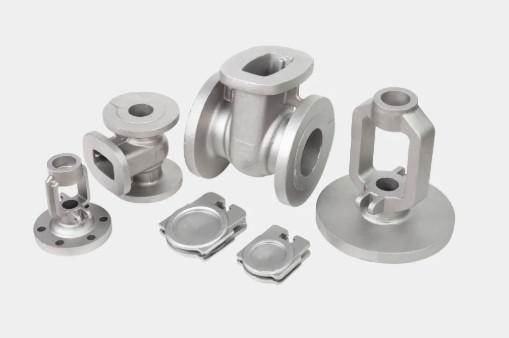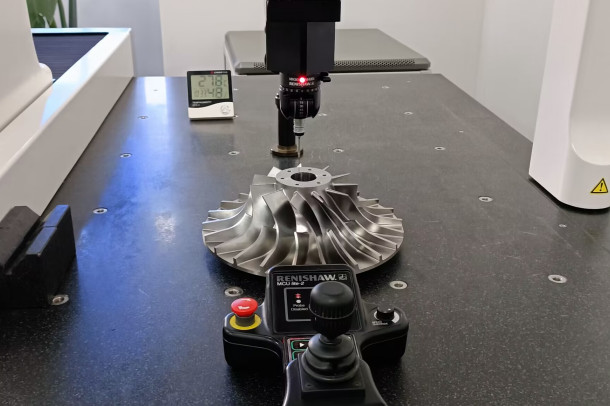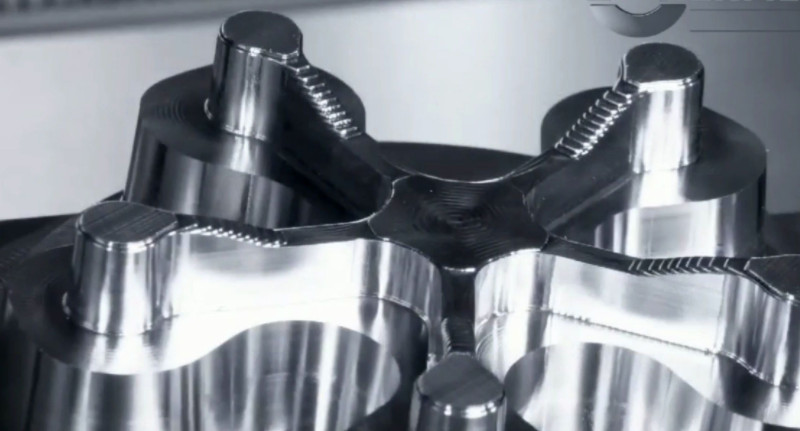Superalloys—also known as high-performance alloys—are a class of metallic materials designed to retain exceptional mechanical strength, corrosion resistance, and thermal stability at elevated temperatures (often 500–1,200°C). Common types include nickel-based (e.g., Inconel 718, Hastelloy X), cobalt-based (e.g., Stellite 6), and iron-nickel-based (e.g., Haynes 282) superalloys. However, their superior high-temperature properties make them extremely difficult to machine compared to conventional metals (e.g., aluminum, low-carbon steel). This guide covers the core challenges of superalloy machining, key technologies, tooling solutions, and industrial applications.
Why Superalloy Machining Is Challenging
Superalloys exhibit unique material characteristics that create significant barriers to efficient machining. These challenges directly impact tool life, surface quality, and process cost.
| Challenge Category | Key Characteristics | Impact on Machining |
|---|---|---|
| High Thermal Resistance | Retain strength and hardness even at 60–80% of their melting point (≈1,300–1,500°C). | - Generates extreme cutting temperatures (up to 1,000°C at the tool-workpiece interface). - Accelerates tool wear (e.g., thermal softening of tool materials). |
| Work Hardening | Rapidly form a hard, brittle "strain-hardened layer" (up to 2x base hardness) during cutting. | - Subsequent tool passes encounter harder material, increasing cutting forces and tool chipping. - Degrades surface finish (e.g., micro-cracks on the workpiece). |
| Low Thermal Conductivity | Thermal conductivity is 1/5–1/10 that of steel (e.g., Inconel 718: ~11 W/m·K vs. steel: ~50 W/m·K). | - Heat accumulates at the cutting edge (instead of dissipating into the workpiece or chips), causing localized tool damage. - Increases risk of workpiece thermal distortion. |
| Abrasive Constituents | Contain hard carbides (e.g., WC, TiC), oxides, or intermetallic phases (e.g., γ’ precipitates in Inconel). | - Acts like "sandpaper" on cutting tools, leading to abrasive wear (the primary failure mode for tools). |
| Toughness & Ductility | High fracture toughness and ductility at room temperature. | - Produces long, stringy chips that wrap around tools or workpieces, disrupting the cutting process. - Requires higher cutting forces to shear material, increasing tool stress. |

Key Machining Processes for Superalloys
No single process is universally optimal for superalloys—selection depends on the workpiece geometry (e.g., turbine blades, bolts), material type, and precision requirements. Below are the most widely used processes, with their strengths and limitations.
Milling
Milling is critical for shaping complex 3D features (e.g., turbine disk slots, engine casings). For superalloys, high-efficiency milling (HEM) and high-speed milling (HSM) are preferred over conventional milling.
- HEM: Uses low cutting speeds (Vc = 20–60 m/min for Inconel 718) and high feed rates (fz = 0.1–0.3 mm/tooth) to reduce heat accumulation. It is ideal for roughing large nickel-based superalloy components.
- HSM: Operates at higher speeds (Vc = 80–150 m/min) with smaller depths of cut (ap = 0.1–0.5 mm) to minimize work hardening. It is suited for finishing operations requiring tight tolerances (±0.01 mm) and smooth surfaces (Ra < 0.8 μm).
Key Consideration: Use rigid machine tools (e.g., 5-axis CNC mills) to reduce vibration—vibration exacerbates tool wear and surface defects in superalloys.
Turning
Turning is used for cylindrical components (e.g., shafts, valves) made of superalloys. The process is divided into roughing and finishing, with distinct parameters:
- Roughing: Focuses on material removal rate (MRR) while managing heat. Typical parameters: Vc = 15–40 m/min, f = 0.15–0.3 mm/rev, ap = 2–5 mm.
- Finishing: Prioritizes surface quality and tolerance. Parameters: Vc = 30–60 m/min, f = 0.05–0.15 mm/rev, ap = 0.1–0.5 mm.
Critical Technique: High-pressure coolant (HPC) systems (80–1,000 bar) direct coolant to the cutting edge, flushing chips and reducing interface temperature by 150–300°C. This extends tool life by 50–100% for Inconel 718 turning.
Drilling
Drilling superalloys is particularly challenging due to poor chip evacuation (long chips clog holes) and radial tool wear (caused by hard precipitates). Key solutions include:
- Tool Design: Use twist drills with wide flutes (for chip flow) and split points (to reduce thrust force and prevent wandering).
- Process Parameters: Low cutting speeds (Vc = 10–30 m/min) and moderate feed rates (f = 0.05–0.15 mm/rev) to avoid overheating.
- Coolant: Through-tool coolant (TTC) delivers coolant directly to the drill tip, improving chip evacuation and cooling.
Advanced Processes (for High-Precision or Hard-to-Reach Features)
For components with extreme complexity or hardness (e.g., turbine blades with cooling holes), conventional machining may be impractical. Advanced processes are often used:
- Electrical Discharge Machining (EDM): Uses electrical sparks to erode material (no physical contact). Ideal for hard superalloys (e.g., Stellite 6) and micro-features (e.g., 0.5-mm cooling holes). Limitation: Slow MRR (1–10 mm³/min).
- Laser Beam Machining (LBM): Uses a high-energy laser to vaporize or melt material. Suitable for cutting thin superalloy sheets (e.g., 0.1–2 mm thick) or drilling micro-holes.
- Ultrasonic-Assisted Machining (UAM): Adds high-frequency vibrations (20–40 kHz) to the cutting tool, reducing cutting forces by 30–50% and minimizing work hardening. Effective for brittle cobalt-based superalloys.
Tooling Solutions for Superalloy Machining
Tool material selection is the single most important factor in superalloy machining—conventional high-speed steel (HSS) tools fail rapidly due to thermal softening. Below are the most effective tool materials, compared by performance:
| Tool Material | Composition | Key Advantages | Limitations | Typical Applications |
|---|---|---|---|---|
| Cermets (TiC/TiN-Based) | Titanium carbide/nitride + nickel/cobalt binder | - High wear resistance at moderate temperatures (up to 800°C). - Low friction (reduces work hardening). | - Brittle (prone to chipping at high cutting forces). - Poor thermal shock resistance. | Finishing turning/milling of Inconel 718. |
| Ceramics (Al₂O₃, Si₃N₄) | Aluminum oxide or silicon nitride | - Exceptional high-temperature stability (up to 1,200°C). - Low cost vs. CBN. | - Extremely brittle (requires rigid setups to avoid fracture). - Not suitable for interrupted cuts. | High-speed turning of nickel-based superalloys (roughing). |
| Cubic Boron Nitride (CBN) | Polycrystalline CBN (PCBN) | - Hardness second only to diamond (resists abrasive wear). - Thermal stability up to 1,300°C. - Ductile enough for interrupted cuts. | - High cost (2–5x ceramics). - Reacts with ferrous materials at high temps (not ideal for iron-nickel superalloys). | Finishing cobalt-based superalloys (e.g., Stellite 6) and hard nickel-based alloys (HRC > 40). |
| Diamond-Coated Carbides | Tungsten carbide (WC) + diamond film | - Ultra-high hardness (resists abrasive wear). - Low friction (reduces chip adhesion). | - Diamond reacts with nickel/cobalt at >600°C (not for nickel/cobalt-based superalloys). - Coating delamination risk under high stress. | Machining iron-nickel superalloys (e.g., Haynes 282) or non-metallic superalloys (e.g., ceramic matrix composites). |
Critical Process Optimization Strategies
Even with the right tools and machines, optimizing process parameters is essential to overcome superalloy machining challenges. Here are key strategies:
Coolant Selection & Application
- Type: Use synthetic or semi-synthetic coolants with extreme-pressure (EP) additives (e.g., sulfur, phosphorus). These additives form a protective film on the tool-workpiece interface, reducing friction and wear.
- Application:
- For turning/milling: High-pressure coolant (HPC) directed at the cutting edge (not just the workpiece surface) to flush chips and cool the tool.
- For drilling: Through-tool coolant (TTC) to reach the drill tip—critical for chip evacuation.
Cutting Parameter Optimization
The "golden rule" for superalloys is: Prioritize tool life over material removal rate (MRR). Aggressive parameters (high speed/feed) may increase MRR temporarily but lead to rapid tool failure and rework. Example optimized parameters for Inconel 718 (the most widely used superalloy) are:
| Machining Process | Cutting Speed (Vc, m/min) | Feed Rate (f/fz) | Depth of Cut (ap, mm) | Tool Material |
|---|---|---|---|---|
| Rough Milling | 20–40 | 0.15–0.3 mm/tooth | 3–8 | PCBN/Ceramic |
| Finish Milling | 40–70 | 0.05–0.15 mm/tooth | 0.2–1 | CBN/Cermet |
| Rough Turning | 15–30 | 0.2–0.3 mm/rev | 2–5 | Ceramic |
| Finish Turning | 30–50 | 0.08–0.15 mm/rev | 0.1–0.5 | PCBN |
| Drilling | 10–25 | 0.08–0.12 mm/rev | (Hole diameter) | Diamond-Coated Carbide |
Minimizing Work Hardening
Work hardening is a top enemy of superalloy machining—even a single poorly executed cut can harden the material, making subsequent cuts impossible. To avoid it:
- Avoid interrupted cuts: If unavoidable (e.g., milling a slotted part), use tools with high toughness (e.g., PCBN) and reduce feed rate by 20–30%.
- Maintain consistent cutting forces: Use constant chip load (CCL) strategies (e.g., adjusting feed rate based on tool path) to prevent localized strain hardening.
- Finish in one pass: Multiple finishing passes increase the risk of work hardening—design processes to achieve final dimensions in a single pass.
Industrial Applications of Superalloy Machining
Superalloys are irreplaceable in industries where high-temperature alloy performance is non-negotiable. Machined superalloy components are critical to:
Aerospace & Aviation
- Turbine Engines: Compressor blades, turbine disks, and combustion chambers (made of Inconel 718, Hastelloy X) require precision milling/turning to withstand 1,000°C+ temperatures.
- Jet Exhaust Systems: Cobalt-based superalloys (e.g., Stellite 21) are machined into exhaust liners for their corrosion resistance.
Energy (Power Generation)
- Gas Turbines: Nickel-based superalloy rotor shafts and blades are milled to tight tolerances (±0.02 mm) to ensure efficient power generation at 800–1,100°C.
- Nuclear Reactors: Hastelloy C-276 is machined into reactor cores and heat exchangers for its resistance to radioactive corrosion.
Medical Devices
- Orthopedic Implants: Cobalt-chromium (Co-Cr) superalloys are turned/milled into hip stems and knee joints—their biocompatibility and wear resistance ensure long implant life (15–20 years).
- Dental Tools: Stellite 6 is machined into dental drills for its hardness and resistance to sterilization temperatures.

Summary
Superalloy machining is a high-stakes, technically demanding process—success depends on understanding the material’s unique challenges (heat resistance, work hardening) and selecting the right combination of tools (PCBN, ceramics), processes (HEM, HPC-assisted turning), and optimization strategies. As industries like aerospace and energy push for higher-temperature superalloys, innovations in tooling and AI-driven monitoring will continue to unlock more efficient, cost-effective machining solutions.
